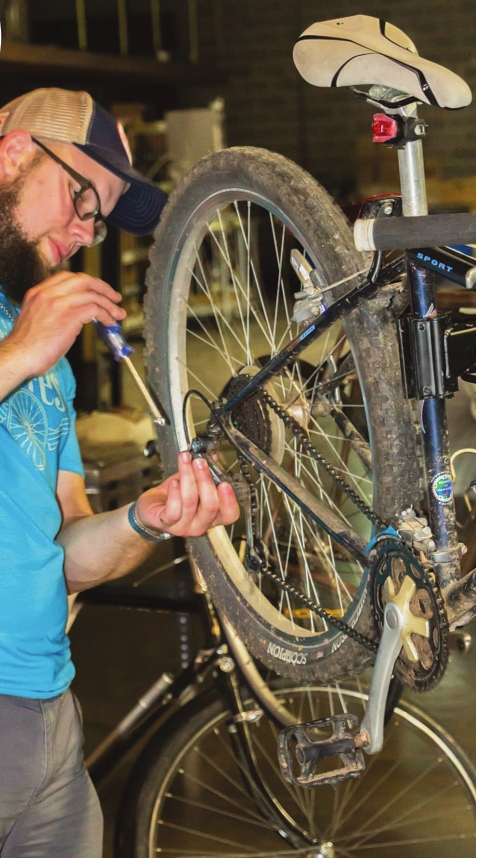Preparedness key to smooth ride
Ride along
I had all intentions of focusing on indoor cycling opportunities (i.e., spinning classes in Shreveport-Bossier City) for this month’s column, but after what happened to me the last time I was on my bike, I decided to hold off on that topic for now.
Let’s face it: No matter how great riding a bike may be, there’s always the chance of something going wrong. For me, I always – hands down – end up with a flat tire. In this last case, it was on the corner of Youree Drive and Akard.
Although I was only a mile away from my house, I was certain I had everything I needed to right the wrong and continue to pedal my way on to band practice.
Nope. The tool I had to remove the inner tube wasn’t working for me – or maybe I wasn’t working for it. Frustrated, I picked up my bike, hit play on my iPod Shuffle and began the walk back home.
Even though I had attended workshops in 2015 hosted by Bike Shreveport and River City Cycling on how to change a tire, I obviously still wasn’t competent in doing it. So the next day I gave Nicholas Burton a call over at The Bike Peddler.
Burton has been riding his bike for more than 10 years and is the service manager at The Bike Peddler. His knowledge on cycling is extensive (He’s been at the shop since 2009), and I appreciated his way of answering my questions in a way that I, a self-proclaimed cycling amateur, could understand.
I started with the basics: What’s the most common cause of a flat tire? Much to my surprise, the most common cause isn’t glass or gravel, but instead thorns. Those
small “stickers,” as I know them, attach to a bike wheel and end up
pushing in like a thumbtack after changing terrains. Think of riding
along the riverfront; if you get off the concrete path, through the
grass, and back on the pavement, take a look at your tires before you
make that transition. Pull out any thorns you may find.
Another
cause is too little air pressure. It’s best practice to air up your
tires every time you ride, even if it’s just a little bit. Burton
reminded me the rubber is porous
rather than airtight. Similar to tires on your car, air leaks out over
time, and with bike tires having much less volume than car tires, it’s
important to keep them aired up for each outing.
Naturally,
I asked him about the best tires for a commuter like me. He suggested a
couple of brands with a thicker design tire, including Vittoria’s Pro
Tech and Continental Tire’s Hardshell. These tires are more protective,
with thicker rubber and materials such as nylon or Kevlar belts added to
the layers of rubber.
As
for the bare essentials – what you need to have on your person anytime
you ride in case of a flat – Burton advised 1) a tube and 2) an air pump
or CO2 cartridge. The advantage of a CO2 cartridge is that it’s
definitely smaller (and you won’t have to strap it to the bike), and it
doesn’t take as long to fill the tube as would using a mini air pump. If
you go the CO2 route, make sure you know how to use it before hitting
the road.
Burton said it’d also be beneficial to have a tire lever (about $4-$5 for a set of two) on you for stubborn tires.
Finally,
ride in areas with other cyclists, such as the parkway or south of
town, so if something does happen and you’re stuck, someone will help.
“Don’t be embarrassed to accept their help,” Burton said. “It’s definitely a community.”
Karen E. Wissing works in Shreveport-Bossier City and loves her community.
E-mail your questions, comments or suggestions to [email protected].